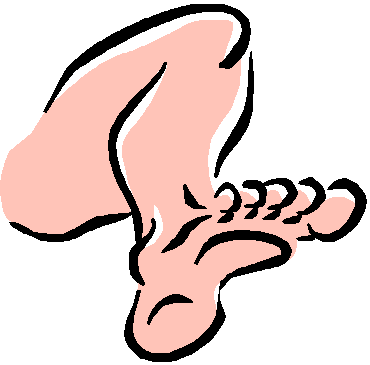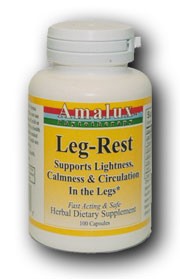A Simpler Explanation Of Restless Leg Syndrome From A Natural Point Of View
 This page contains several links relating to the topic of restless leg syndrome – Sindrome de las piernas inquietas – from the Traditional Herbal perspective and the product Leg-Rest. Please follow the topics below to take you to specific restless leg syndrome information or product information. The information about restless leg syndrome on this page is somewhat condensed.
This page contains several links relating to the topic of restless leg syndrome – Sindrome de las piernas inquietas – from the Traditional Herbal perspective and the product Leg-Rest. Please follow the topics below to take you to specific restless leg syndrome information or product information. The information about restless leg syndrome on this page is somewhat condensed.
Note: “In order to remove restless leg syndrome the ancient herbalists would have, in principle, restored the bodies ability to create, store and distribute the body’s own “energy” through its normal circulation thereby strengthening the other organs into proper function effectively removing the wastes and stagnation in the blood. Using this simple approach, the problem is in principle solved, and for the most part…gone. This is what a product like Leg-Rest does.”
- Testimonials
- Restless leg syndrome explained in brief
- A More in depth article on the cause of restless leg syndrome from the Traditional Herbal Perspective
- Why the legs
- Restless leg syndrome explained in analog “A”
- Restless leg syndrome explained in analog “B'”
- Iron deficiency
- How the Kidneys relate to restless leg syndrome
- The relation of restless leg syndrome to Gout or Arthritis
- The relation of restless leg syndrome and Podagra
- Leg-Rest an all natural product used for restless leg syndrome
- Leg-Rest Product Testimonials
The explanation below explains restless leg syndrome in brief. If you would like more details from the natural point of view about restless leg syndrome click here.
Restless leg syndrome or as it is known is Spanish “Sindrome de las piernas inquietas” with related sleep disorders is not a totally new phenomenon. The effects have existed for centuries. Today it is far more prevalent than ever, largely because of our modern circumstances.
Restless leg syndrome with related sleep disorders can be compared to gout or arthritis only less intense; occurring within the blood vessels instead of in joints. Being in a liquid, the “irritating substance” is not so concentrated as to provoke an actual inflammation in one concentrated area but because of its dilution within the fluids of the vessels it is being diffused over a larger area usually producing an irritation rather than actual pain.
Think of any irritating substance. When you remove it or dilute it, it’s affect is either gone or diminished. Imagine how a wooden sliver will irritate or how an irritating substance on our skin will cause irritation. Now think of it as circulating within the vessels and on the vessel walls. it’s no more complicated than that. It stands to reason that if there are too many irritating substances being carried in the blood they can also alter the blood’s chemistry.
Important concept: The term “life force” is a very abstract term to most people. The blood carries this life force taken from the air we breathe and the food we eat to all parts of the body. In the Orient it is called “chi.”
This very fine life energy for various reasons can be provoked to stop flowing freely due to its insufficiency to produce stagnation. With it the movement of the blood in general along with the substances being carried in the blood also become inhibited in their flow. It is not that the blood stops circulating altogether, it’s a matter of the blood not having enough energy to properly carry what is in it. This is not a stoppage, but a stagnation. In this context it is the difference between a clean mountain stream flowing freely as compared to a muddy silty river delta that is constantly dropping it’s silt to produce shifting and sometimes treacherous sand bars. The water flowing more slowly does not have the energy in it’s flow to keep the silt so it must drop it where necessary. In the body, stagnancy can cause various substances to accumulate and ferment, releasing their heat and rarified toxins to produce local irritation. This can range from a mild itching to actual pain.
This life force is to our blood what octane is to the fuel we put into our cars. The more octane the more power is available for the engine to convert. Similarly, the more “life force,” the more capacity/energy we have to move that which could become stagnant. It stands to reason that with age there is less life force available to us. This deficit in life force leaves the blood less vital.
Physicists are starting to pay attention to this “energy” that surrounds us everywhere. They are acknowledging that it does indeed exist. It is everywhere and in everything. And, although this circulating “power,”is vital, it still beyond being mechanically quantified. Having said all of this, when you consider that most of our blood is in our legs, it only makes sense that a greater possibility of this type of irritation will occur in the legs and that it should be more common in older people. Although the younger people of today, with their extremely poor eating habits get Restless Leg Syndrome too – especially in women!
This is how a knowledgeable herbalist would theoretically explain restless leg syndrome related sleep disorders.
If you would like more details from the natural point of view about restless leg syndrome click here.

 Leg-Rest
Leg-Rest
Supports Natural Circulation & Calmness in the Legs – Restless legs and feet.
Regular Price: $26.95
If you are more interested in or would like to read perspectives on restless leg syndrome that are from an entirely different point of view please follow the links below:
Restless Leg Syndrome RLS on ABC’s “Good Morning America”
On Thursday, February 19th, ABC”s Good Morning America did a feature segment on RLS. Dr. Richard Allen, PhD and Chris Earley, MD Phd from Johns’s Hopkins Bayview Medical Center were interviewed as well as a patient, Florence Mews.
To visit ABC Good Morning America’s website about the RLS segment, please.
There are other places where you can reference information about RLS like:
Restless Leg Syndrome Foundation – Health Encyclopedia – rls – rlsUK – rlsAU – we move – NIND
These are terrific sources of information and referrals even though we do not agree with their findings and conclusions.




